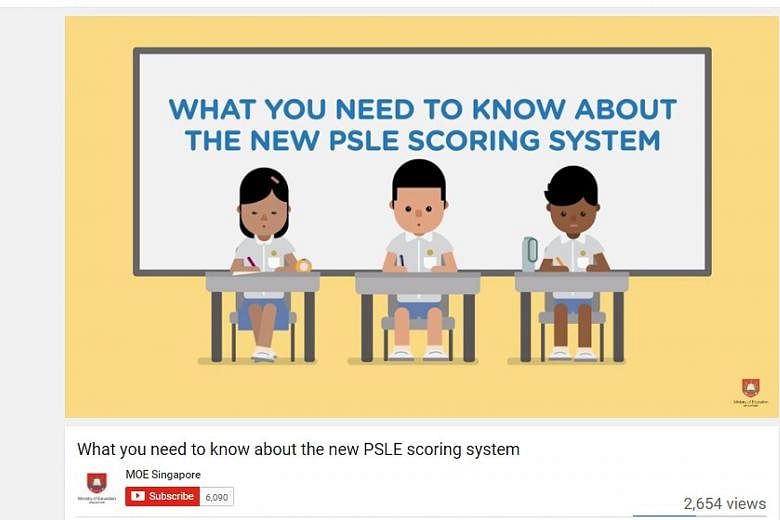When the Ministry of Education (MOE) announced changes to grading the Primary School Leaving Examination (PSLE), a challenge it faced was explaining them to parents.
It will be hard for many of them to shake off their obsession with the aggregate, or T-score - one of the reasons behind the changes.
As a result, the ministry has focused on getting parents to think about learning - and measures of success - in a broader way, says the director of the ministry's design branch, Ms Rachel Tan.
"(The PSLE changes) come on a wave of other changes we have been (making)," she says. "We have made learning more active in school and put in more outdoor education."
She adds that these changes have been happening "quietly" and some parents might not have noticed them.
A brochure put together by the design team - which comes under the ministry's communications and engagement group - illustrates how a typical school day for students looks now, with sports, drama, art, and music built into the teaching of different subjects.
The design team was started about two years ago, as the ministry saw the need to put more emphasis on shaping marketing "collaterals" - brochures, fact sheets, folders, and other such materials - as well as "user" experience, in order for policies to be better understood.
The team then made an animation video showing how the change would affect a Primary 5 boy they named "Bryan".
Another three-minute video spelt out in clear terms the technical changes to the grading system - how the aggregate score is computed, and how the new grading bands work.
Schools were trained to use the materials to explain the changes to parents.
The divisional director of MOE's engagement and research division, Ms Genevieve Chye, says schools were given a kit with the materials and ideas on how to incorporate them during discussions with parents.
"They are not meant to be just distributed like pamphlets. We want schools to show them to parents, go through different parts of the policy and use that to trigger conversations," she says.
Ms Tan adds: "It's easy to put together an FAQ with the technical information all together in a pretty brochure. But that does not encourage interaction with the content."
Key to the ministry's engagement with parents and students is its partnership with individual schools.
"We are such a large organisation that schools sometimes see themselves as (being) divorced from us. They may think that this is a policy from the headquarters," Ms Chye says.
"But really, they are the implementers of the policy and we need to work seamlessly with them."
Mr Marvin Chan, vice-principal of Rosyth School, tells Insight that MOE sought feedback from principals and teachers from an early stage and kept them well-informed about the PSLE changes, which in turn helped them better explain them to parents and students.
"Customised engagement sessions for school leaders were organised before key personnel, the middle managers, were engaged. This was followed by school-based discussions with staff, (alongside) the official announcement."
This engagement strategy, Mr Chan notes, gives schools ample time to engage with stakeholders.


